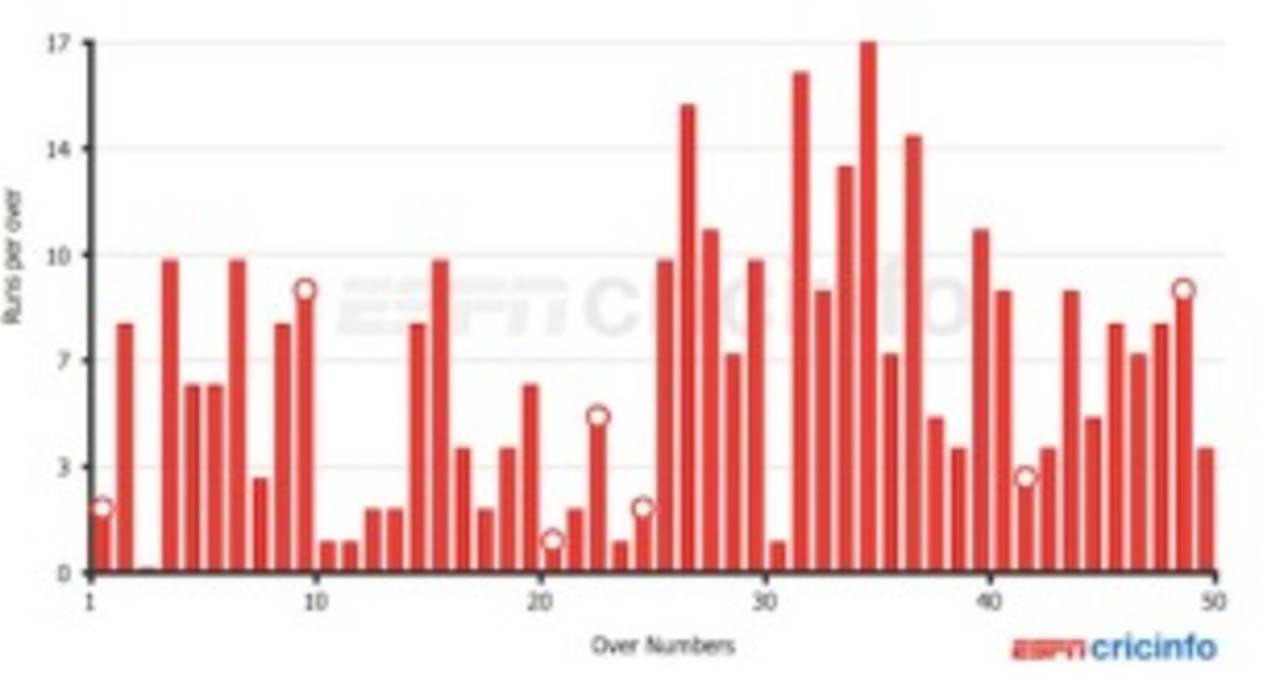When Ireland had slumped to 113 for 5 for 25, the overwhelming feeling was one of resignation, as another lesser team seemed to be going down without much of a fight. At the same stage of their innings, England had scored 31 more runs, and lost three fewer wickets. Ireland's asking rate at that stage was 8.60, and they needed to sustain that rate over 25 overs, with only the bottom five wickets at their disposal. Impossible? Most would have thought so, but obviously Kevin O'Brien and Co didn't.
What transpired in the last 25 was truly incredible, as Ireland scored at a run rate of 8.93, and lost only two wickets while doing so, in the process achieving the
highest successful run-chase in World Cup history. In the batting Powerplay, Ireland scored 62 without losing a wicket, which is the second-highest score in batting Powerplays in this World Cup, next to Pakistan's 70 for 1 in their one-sided match against Kenya.
Kevin O'Brien blasted the fastest World Cup century, and he didn't just edge past the earlier record; he utterly demolished it, bettering
Matthew Hayden's mark by 16 deliveries. In fact, only
five batsmen have scored a quicker century in the entire history of one-day internationals.
Overall, the contrast between the manner in which the two teams batted couldn't have been greater. England preferred to accumulate steadily (if such a term can be used for a total of 327). They scored only 134 runs in boundaries, and instead ran plenty of singles (131) and played very few dot balls (119).
Ireland's method was the complete opposite: they ran 47 fewer singles, and played out 37 more dot balls. In a normal game, a difference of that magnitude in doing the basics would have proved decisive. O'Brien, though, had the skill and the power to strike boundaries at will, and that made up for all the other flaws in the run-chase. Ireland scored 52 more runs in boundaries than England - an unusually large difference in such a close game - and that, ultimately, was the more important statistic than dot balls and singles.
Ireland's 329 is also the highest total by a non-Test-playing team against a Test-playing side. Kenya
scored 347 for 3 against Bangladesh in Nairobi, but that was in 1997, before Bangladesh made their Test debut. O'Brien was obviously the hero, but he got excellent support from Alex Cusack and John Mooney, who earlier became the first Irish bowler to take four wickets in a World Cup match. Despite that, Ireland conceded more than 300 for the first time in World Cups, but that only gave O'Brien an opportunity to show his class. The match total of 656 is the
third-highest in World Cup history, only 20 short of the record.
For England, there is plenty to worry about before their next game, against South Africa. They have been at the receiving end of two of the
largest totals made by Associates in ODIs: a little more than a week back, they conceded 292 against Netherlands. Between these two matches, England also conceded 338 against India, which means they've gone for a grand total of 959 runs in three matches, despite having played only one of the top teams in their group. Their
total runs conceded is easily the highest among all the teams in this World Cup, while their economy rate (if it can be called that) of 6.43 is marginally worse than India's 6.21.
